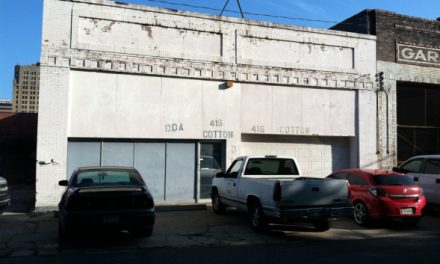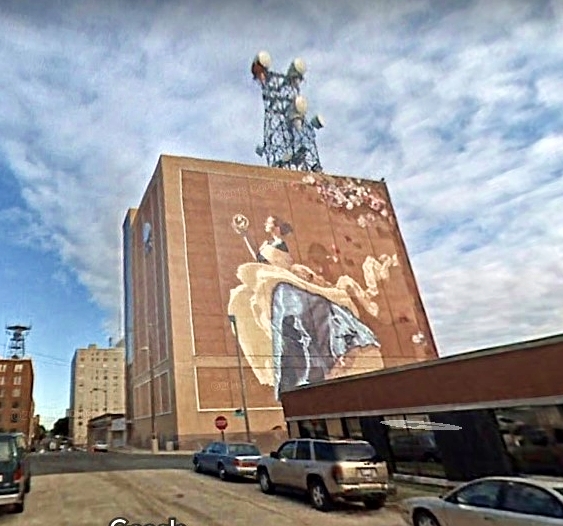 For years prior to the painting of the Millennium Mural on the south and east sides of the A T & T Building in Downtown Shreveport, the building was known simply as the ‘one with the giant antenna on the roof.’
For years prior to the painting of the Millennium Mural on the south and east sides of the A T & T Building in Downtown Shreveport, the building was known simply as the ‘one with the giant antenna on the roof.’
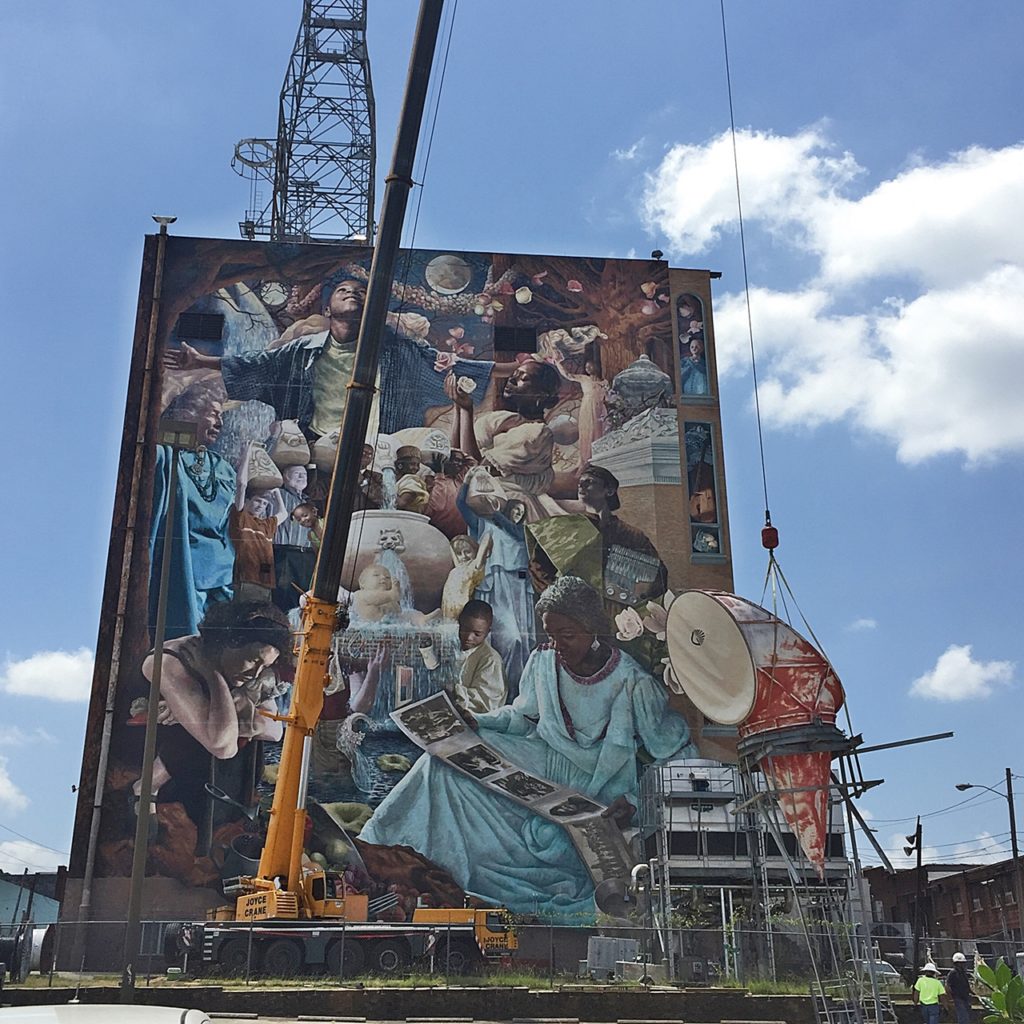
The horn coming down.
That has now changed, thanks to advances in technology. The giant Nautilus-looking structure that the antenna held was a microwave, something that is going the way of the Rolodex, the flip phone, and dial-up Internet. Now it’s all fiber, baby, something that doesn’t need an ugly antenna from the late 50s or early 60s. The new fiber is digital rather than analog medium, well suited for transmitting data as well as voice without a ‘horn of enormity’ urging it along.
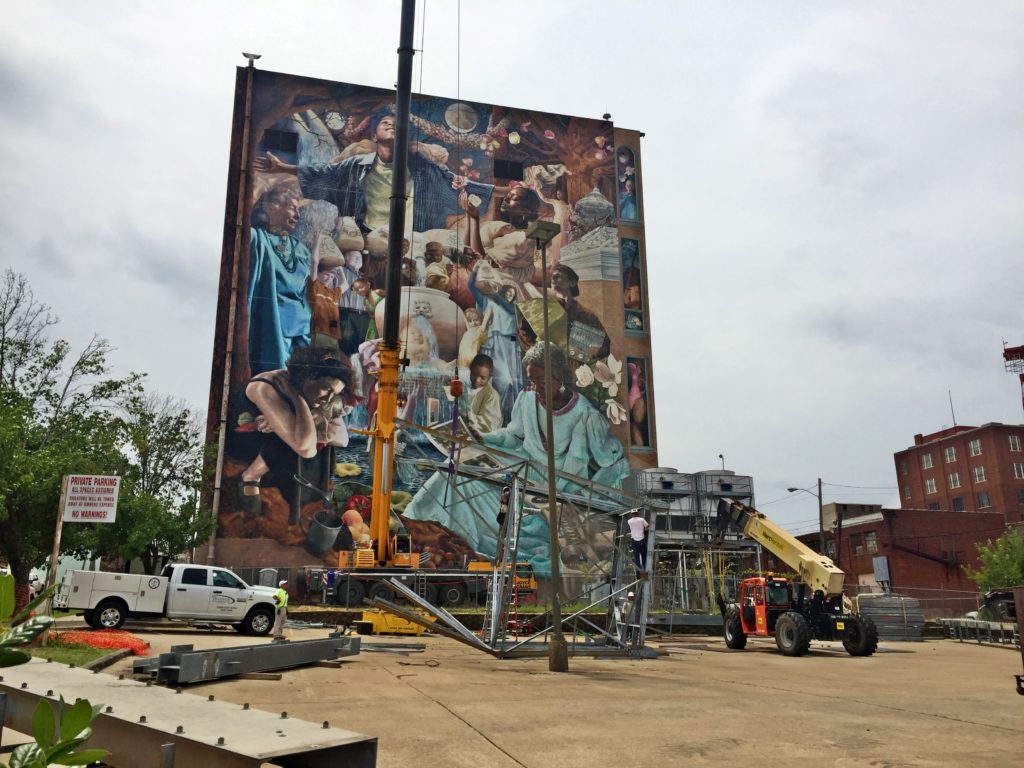
The antenna is grounded!
According to 99PercentInvisible.org, in the 1950s, a series of microwave towers was positioned to make certain as many people as possible had telephone and television service. At the time, line-of-sight was the only way to roll.
“Built in the early 1950s, this line-of-sight network spanned the continent using zig-zag patterns to avoid signal overlap. It conveyed phone conversations and television signals from the era of the Kennedy assassination through the resignation of Nixon. The towers were generally spaced 30 to 40 miles apart and can be hunted using old official charts or this unofficial Google Map. It was the largest network of its kind when it opened, and unique in relying on microwaves rather than transmission wires.”
While the array on the top of downtown’s McNeil Street AT&T Building was not one of the giant towers, it was important to strong signal service to the local network.
The large metal piece at the top of the antenna was called a ‘horn’, and when it was built, was pretty remarkable technology, says 99PI.
“The microwave relay system was part of the AT&T Long Lines network, which included wire and cable connections. 99pi fan and Long Lines aficionado Corey Carlson explains that “the Long Lines network relayed analog data from one horn to another, with polarization of radio waves to expand the signal capacity.” Their “SUV-sized ‘horn’ antennas” were designed to focus radio signals out horizontally toward other towers and be durable, “resistant to the pressure wave from a nuclear blast.”
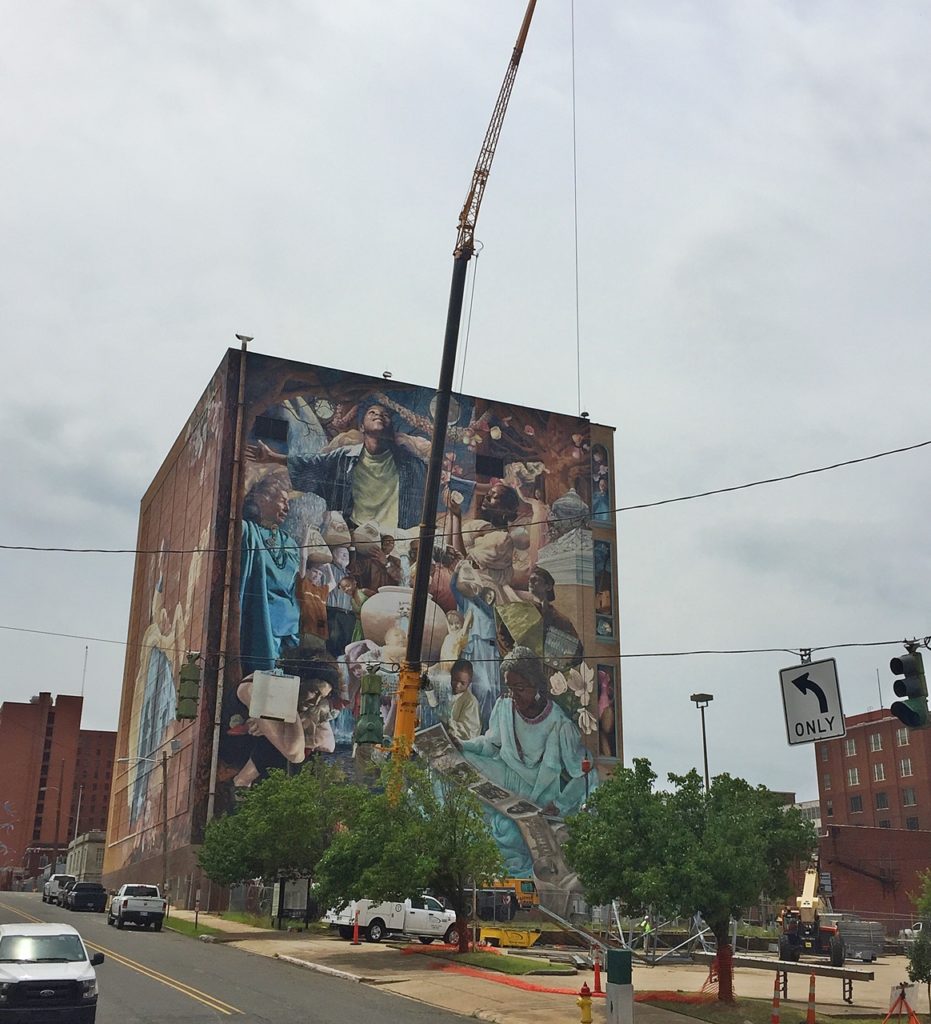
Sans antenna
Now, the horn is no more, removed from the downtown urban landscape. Photographers will no longer have to crop the antenna from their beauty shots of the year 2000 mural. While we are fans of history and historical structures, this is not one that we will miss.


